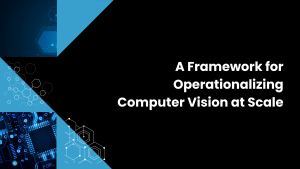 Last week, Microsoft announced the follow up to the much-maligned Surface line of tablets. In doing so, the company announced that they have decided to simply ignore the most serious issues with Surface while addressing items that weren’t really all that bad in the first release.
Last week, Microsoft announced the follow up to the much-maligned Surface line of tablets. In doing so, the company announced that they have decided to simply ignore the most serious issues with Surface while addressing items that weren’t really all that bad in the first release.
Most egregiously, Microsoft has completely failed to address the confusion surrounding the simple naming of the product and what is and is not possible. To their credit, the company did drop “RT” from the new name, opting to simply name the Windows RT-bearing unit “Surface 2” while the unit running the full Windows 8.1 is named “Surface Pro 2”. The naming still does not help differentiate between the different versions of Windows, which support different kinds of software. There is been confusion over Windows RT vs. Windows 8 since the names were released and Microsoft has done little to clear up the mess. Personally, while I understand the device agnostic nature of RT, I wish the company could have found some way to help people understand the differences or even considered eliminating RT.
Under the hood of the device, a little bit has changed, but for the better. The Surface 2 now uses Intel’s Haswell processor line, which should provide a bit more processing power while increasing battery life. That’s not a bad tradeoff. In addition Microsoft has updated the interior hardware a bit as well by adding a USB 3.0 port, and upgrading the device to a full HD 1920 x 1080 screen. These changes are nice, but there weren’t major complaints about the original hardware. That said, since Microsoft decided to release a new version of the device, it just makes sense that they would improve the hardware specs, too.
However, partners are still running away from Windows tablets as fast as they can. Just today, Dell removed the XPS 10 from its web site. This leaves Microsoft as the sole Windows RT device maker. A strong partner ecosystem has often made Microsoft very successful. Today, that ecosystem is disappearing as Windows RT proves to be a failure.
Yet, Microsoft is still going to go down the RT road again, but this time by itself. Perhaps the market will respond more kindly this time. However, the fact is that Microsoft doesn’t need RT. Today’s Intel processors are more than sufficient when battery life is paramount. There is simply no need to differentiate based on processor type, which was the original reason for the introduction of RT. There is no need to force customers to compromise with what amounts to a crippled version of Windows with a crippled ecosystem.
Unfortunately, making this admission could also cripple Microsoft’s long-term efforts to unify their various platforms. Windows RT apps are the only kinds that run on both Windows RT and the full Windows 8. In addition, there are signs that Windows RT apps will also run on the new Xbox. This cross platform application compatibility could be a powerful differentiator for Microsoft, but with no one bothering to write apps, it might not amount to much anyway.
Although I like the Surface Pro, I see Microsoft’s next efforts – the Surface 2 – as more of the same decision that led to Microsoft taking an almost $1 billion write down this year. I hope that the company re-evaluates its plans in order to avoid this possibility.


